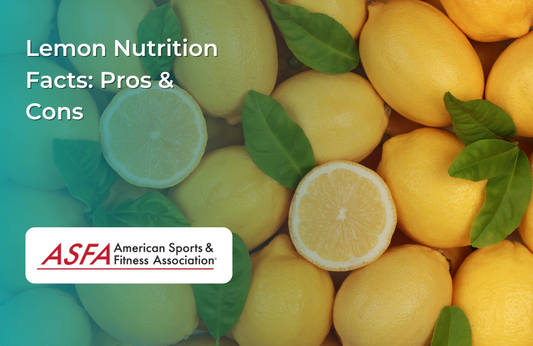Hypertrophy, a term frequently used in the fitness and bodybuilding world, refers to the process of muscle growth and enlargement. Achieving muscle hypertrophy is a common goal for individuals seeking to build strength, increase muscle mass, and improve their overall physical performance. As a provider of fitness education, ASFA recognizes the significance of understanding hypertrophy to design effective training programs and support individuals in reaching their fitness goals. In this comprehensive guide, we will delve into the science behind hypertrophy, exploring its mechanisms, factors influencing muscle growth, and effective strategies to stimulate hypertrophy for optimal muscle development.
I. What is Hypertrophy?
1. Definition: Hypertrophy is the increase in the size of muscle cells, resulting in muscle growth and a corresponding enlargement of muscle tissue.
2. Mechanism: Hypertrophy occurs when muscle fibers undergo structural changes, such as an increase in the number of contractile proteins, leading to greater muscle cross-sectional area and strength.
3. Types of Hypertrophy: Hypertrophy can be classified as myofibrillar hypertrophy, which involves an increase in contractile proteins, and sarcoplasmic hypertrophy, which involves an increase in non-contractile proteins and fluid within muscle cells.
II. Factors Influencing Hypertrophy
1. Mechanical Tension: Mechanical tension, generated through resistance training, is a primary stimulus for muscle hypertrophy. Progressive overload, where the intensity of training increases over time, is crucial to stimulating muscle growth.
2. Metabolic Stress: Metabolic stress occurs during high-repetition training, leading to the accumulation of metabolites, such as lactate, which contributes to hypertrophy.
3. Muscle Damage: Resistance training causes microtrauma to muscle fibers, initiating the repair and growth process.
III. Muscle Fiber Types and Hypertrophy
1. Slow-Twitch (Type I) Muscle Fibers: Slow-twitch muscle fibers are more resistant to hypertrophy compared to fast-twitch fibers. They are primarily involved in endurance activities.
2. Fast-Twitch (Type II) Muscle Fibers: Fast-twitch muscle fibers have a higher potential for hypertrophy and are involved in activities requiring strength and power.
IV. Role of Satellite Cells
1. Satellite cells are precursor cells located on the surface of muscle fibers.
2. During hypertrophy, satellite cells are activated and fuse with existing muscle fibers, contributing to increased protein synthesis and muscle growth.
V. Hormonal Influence on Hypertrophy
1. Testosterone: Testosterone, a key anabolic hormone, plays a significant role in muscle growth by stimulating protein synthesis and satellite cell activity.
2. Growth Hormone (GH): GH also promotes protein synthesis and stimulates muscle growth.
3. Insulin-Like Growth Factor 1 (IGF-1): IGF-1 is a potent anabolic hormone that influences muscle hypertrophy.
VI. Nutrition and Hypertrophy
1. Protein Intake: Protein is essential for muscle repair and growth. Adequate protein intake is crucial for stimulating hypertrophy.
2. Caloric Surplus: Consuming more calories than the body burns (caloric surplus) is necessary for muscle growth.
3. Timing of Nutrient Intake: Consuming protein and carbohydrates around the time of exercise can optimize muscle protein synthesis and recovery.
VII. Training Strategies for Hypertrophy
1. Resistance Training: Compound exercises such as squats, deadlifts, bench presses, and rows are effective for stimulating overall muscle growth.
2. Repetition Ranges: Moderate to high repetitions (6-12) are commonly used to induce hypertrophy.
3. Volume and Frequency: Performing multiple sets and training muscle groups 2-3 times per week can be beneficial for hypertrophy.
4. Progressive Overload: Gradually increasing training intensity and resistance over time is vital for continued muscle growth.
VIII. Rest and Recovery
1. Adequate rest is essential for muscle recovery and growth.
2. Overtraining or insufficient rest can hinder hypertrophy progress.
IX. Age and Hypertrophy
1. Hypertrophy potential varies with age. Younger individuals tend to experience greater muscle growth compared to older adults.
2. Nevertheless, resistance training can still lead to significant hypertrophy in individuals of all age groups.
X. Muscle Hypertrophy and Athletic Performance
1. Muscle hypertrophy can enhance athletic performance, strength, power, and endurance.
2. Properly programmed hypertrophy training can benefit athletes across various sports.
XI. Avoiding Overuse Injuries
1. Balancing hypertrophy training with other exercise modalities can help reduce the risk of overuse injuries.
2. Proper exercise technique and form are crucial to avoiding injury during hypertrophy-focused workouts.
XII. Conclusion
Hypertrophy is the key to achieving muscle growth and improved physical performance. Understanding the mechanisms and factors influencing muscle hypertrophy is essential for designing effective training programs and supporting individuals in reaching their fitness goals. As a provider of fitness education, ASFA emphasizes the significance of proper resistance training, nutrition, and rest for stimulating hypertrophy while avoiding overuse injuries. By integrating science-based training strategies, fostering proper nutrition habits, and promoting adequate rest and recovery, individuals can unleash their full potential for muscle growth and embrace the journey towards a stronger, more resilient body.





